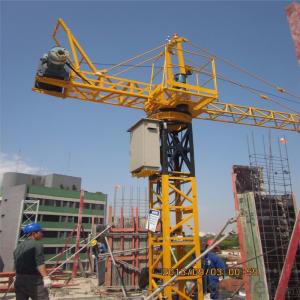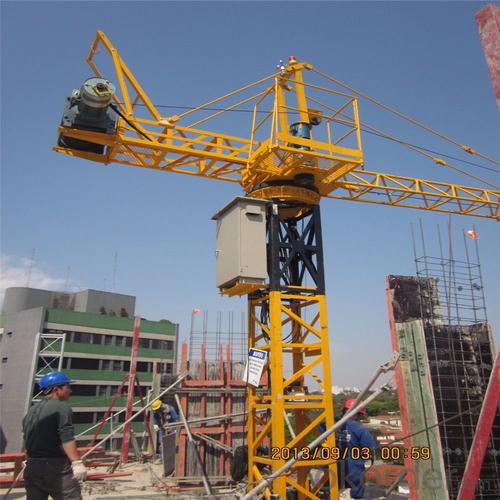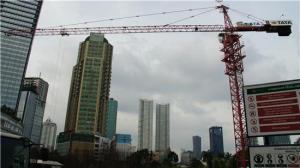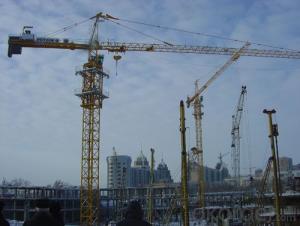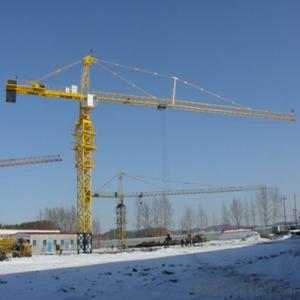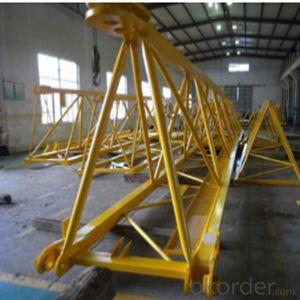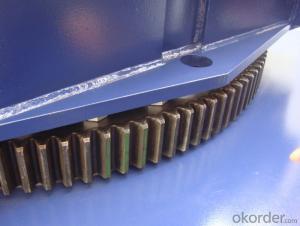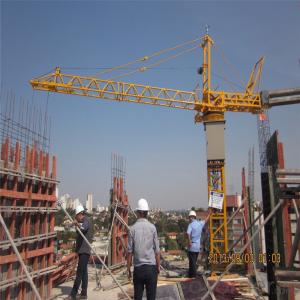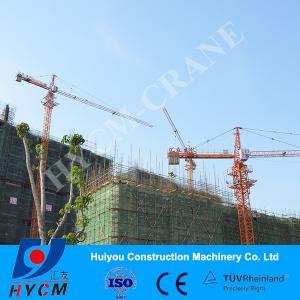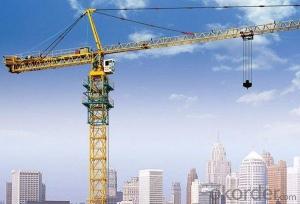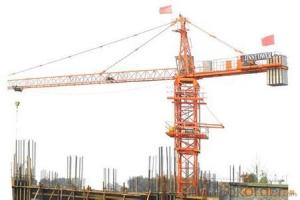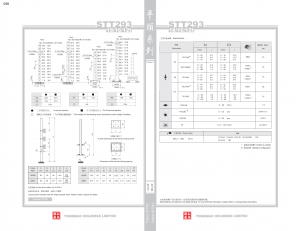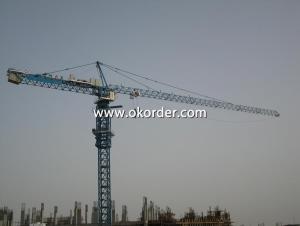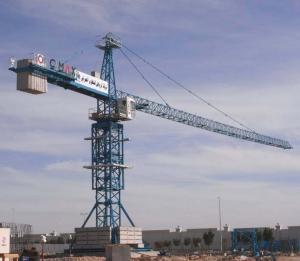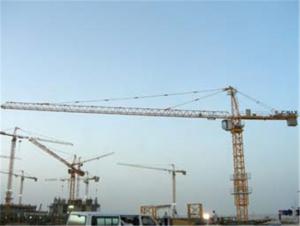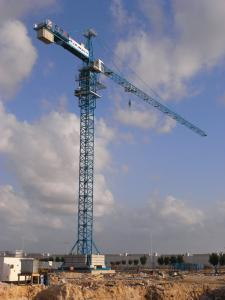Tower Cranes Inner Climbing Model of QTZ50(5008)
- Loading Port:
- Qingdao
- Payment Terms:
- TT OR LC
- Min Order Qty:
- 1 unit
- Supply Capability:
- 100 unit/month
OKorder Service Pledge
OKorder Financial Service
You Might Also Like
QTZ50(5008) Description
Feature: Tower Crane Condition: New
Application: urban construction Rated Loading Capacity: 4T
Rated Lifting Moment:400KN.M Max. Lifting Load: 4T
Max. Lifting Height:120M Span: 50M
Model Number: QTZ50(5008)
Certification: ISO9001:2000; CE;Ukraine & Belarus Certificate
Colour: Orange/ Yellow
After-sales Service Provided: Overseas third-party support available
QTZ50(5008) Features
1.Ten years of experience in supplying new self-erecting tower crane with Taiwo Brand.
2. Export to more than 20 countries with CE/ISO/GOST Certificates.
3. Stationary/Travelling, external/ internal climbing tower crane
4. Impeller blasting/rust protection paint
5. Advanced painting process
6. Potain masts designed with dismountable panels, making teansport easier and cheaper.
7. New designed mast, can be used to Internal and external climbing tower crane
8. Engineers available to service machinery overseas.
QTZ50(5008) Specification

QTZ50(5008) Pictures
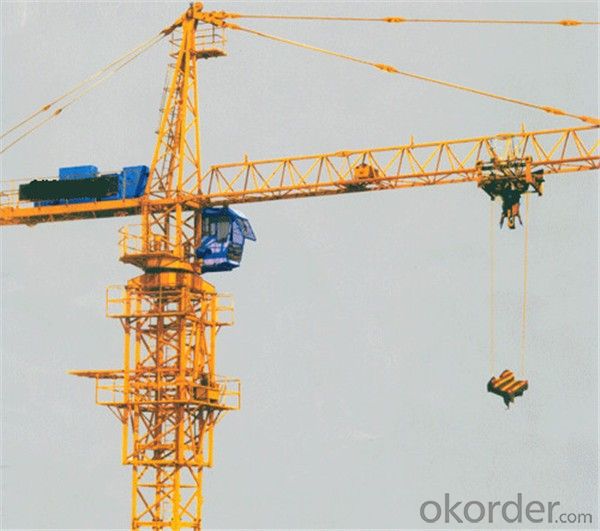

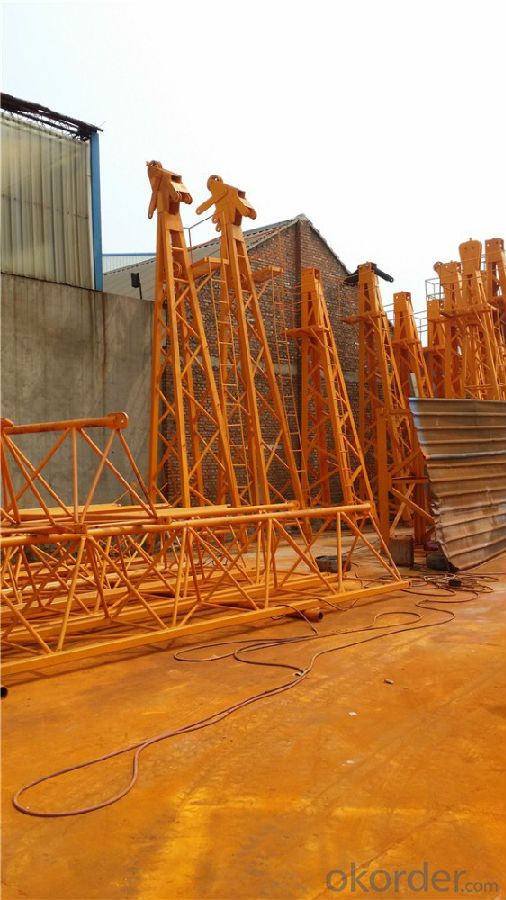
QTZ50(5008) FAQ
Q: What is the difference between working wire rope and safety wire rope?
A: There are two kinds of rope using for suspended platform, working wire rope is for working up and down, the other is safety wire rope, just for safe, if the working wire rope broke and fell down, the safety wire rope will locked immediately.
Q: Can you equip with light on tower crane jib, monitor, remote control and anemometer?
A: Sure. All of these could be provided with extra cost upon the clients’ requirements. But according to general practice, remote control is not suggested because most of the operator feedback operation in the cabin will provide a wide working view.
Q: What is 3 main mechanism of the tower crane?
A: there are trolleying mechanism/ slewing mechanism/ hoisting mechanism.
- Q: What are the luffing, slewing, and walking points of a tower crane?
- The luffing of a tower crane is the forearm of a crane;Slewing means the steering mechanism of a crane;Walking means the walking trolley on the luffing range of a crane
- Q: If I have one week, is that enough time?
- It all depends on how fast you can make one paper crane and how many hours you have available each day. If you made 15 an hour for 10 hours each day (150 cranes a day) for 7 days you would have 1050 cranes. You will probably find that you begin to go faster, the more cranes you make. However, after 2 or 3 days you will get sore hands and this will slow you down again. It's easier when you work as a team.
- Q: How good a job do you think Crane did in voicing the theme of pride/morales in Red Badge of Courage?
- How good a job do _you_ think he did? If this is a homework then your teacher wants _your_ opinion, not that of a stranger on the internet.
- Q: How much do you know about construction cranes??
- that depends, what do u need to know
- Q: Is boom truck a crane truck? Are they the same or two different kind of truck?
- A 'boom' is attached to a flat-bed truck and is used to unload a heavy delivery (usually building supplies and materials) to a specific location. A 'crane' is similar except that it doesn't unload things. It is attached to a truck and is used for moving heavy objects and materials from one place on another on the same property.
- Q: Can anyone help me interpret the poem Fear by Hart Crane? or North Labrador?
- Analysing Poetry Close reading may seem like a foreign and unfamiliar approach to analyzing a piece of text. However, it can often yield insights that will help you to create a unique paper developed from your own interpretation of the text. To analyze the work effectively, it is useful to concentrate on specific components of literature used to build and reveal the themes in the work. This process will help you explain how a passage relates to central themes in the text allowing you to reach an intelligent and creative thesis for a literary analysis. First, choose a passage (or a series of passages) that intrigues you.
- Q: is the elevation of the upper surface of the tower crane foundation flat with the elevation of the bottom of the new building? Or lower than the trough bottom elevation? ThirtyI think this is better. Please specify which specification has the relevant regulations. Which page is it? Thank you very much!
- There is no standard in the tower crane foundation and building foundation, there is no such provisions.In fact, you can do whatever you can. The only factor that can be said is the Design Institute, to see if they agree.Design Institute to consider this problem, generally disagree, you let the two based on the surface flat, because there is a stress concentration problems. It's like a pebble under your mattress. So, in general they will demand based on the surface in the construction of tower crane foundation floor, the middle 30-50cm gap with soil pad.Of course, no matter which of these two methods you have to use the back belt to enclose the tower crane foundation.
- Q: What are the conditions of tower cranes, strictly prohibited?
- Tower cranes are prohibited under any of the following circumstances:1, the state explicitly eliminated products;2, more than the required service life, failed to assess the quality of products;3, products that do not meet the current relevant standards of the state;4, there is no complete security technical records of the product.Tower crane (tower crane) is called tower crane, also known as tower crane, originated in Western europe. A revolving crane mounted on top of a tall tower. The working space is large, mainly used for the vertical and horizontal transportation of materials and the installation of building components during the building construction. It consists of three parts: metal structure, working mechanism and electrical system.
- Q: i have 5 tower cranes outside my window at different construction sites and they all position their cranes the same direction at the end of the day. is there a reason for this.
- I would think it's wind-related. If they were all pointed differently, one would catch more wind and spin more. If they were close enough, this one may hit another. If they were all pointed the same, this would be less likely (although not guaranteed). They SHOULD be spaced apart sufficiently, though, so during operations there is no chance of hitting another. So, it's more likely because of something on the ground. Maybe at last drop off they were all pointing in the same direction?
- Q: I'm trying to workout the best height of a truss for a ship-to-shore container crane project. The crane will have a 65m outreach, 18m center section and 15m backreach. I was thinking in the region of 2m-3m truss height.Any input would be great.Thanks
- Jimmy: The American Society of Mechanical Engineers (ASME) produces design standards for many types of cranes: see the link below. Many crane owners, licensing and governmental authorities having jurisdiction over cranes require design, fabrication and testing to ASME standards.
Send your message to us
Tower Cranes Inner Climbing Model of QTZ50(5008)
- Loading Port:
- Qingdao
- Payment Terms:
- TT OR LC
- Min Order Qty:
- 1 unit
- Supply Capability:
- 100 unit/month
OKorder Service Pledge
OKorder Financial Service
Similar products
Hot products
Hot Searches
Related keywords
